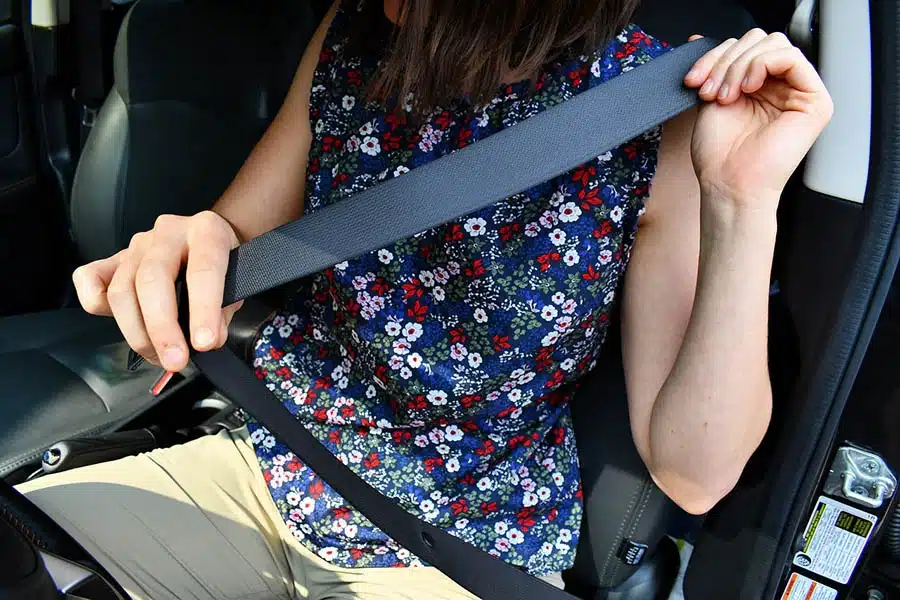Seat belts are crucial protection functions in cars, designed to protect occupants within the occasion of a collision. However, like any mechanical element, seat belts can sometimes come upon problems, and one commonplace problem is a jammed seat belt buckle. A jammed buckle can be irritating and compromise the effectiveness of the seat belt. In this comprehensive guide, we are able to provide a step-by-step restore system to help you address a jammed seat belt buckle successfully and effectively.
Understanding Seat Belt Buckles
Before diving into the repair method, it’s vital to have a fundamental expertise of ways seat belt buckles paintings. Most seat belt buckles include a release button, a latch plate, and a mechanism that locks the belt in an area for the duration of surprising moves or stops. A jammed buckle can also occur because of diverse motives, consisting of dirt accumulation, a foreign object lodged inside the buckle, or a malfunction in the inner locking mechanism.

Tools and Materials You’ll Need
Before you begin the repair process, accumulate the essential gear and materials to make certain an easy and a hit operation. Here’s a list of gadgets you will want:
Flathead screwdriver: For prying open panels and accessing tight spaces.
Cleaning answer: To remove dirt, dust, or different contaminants from the buckle.
Compressed air: Useful for blowing away debris from hard-to-attain regions.
Lubricating spray: To lubricate the buckle’s moving elements and improve capability.
Needle-nostril pliers: Handy for gripping and maneuvering small components.
Safety gloves: Protect your palms throughout the restore manner.
Flashlight: Illuminate the buckle meeting for better visibility.
Step 1: Safety First
Before attempting any repairs, ensure the vehicle is parked on a degree floor, and the engine is grown to become off. Fasten the seat belt on the opposite aspect of the jammed buckle to steady yourself in place.
Step 2: Inspect for Debris
Examine the seat belt buckle for seen particles consisting of crumbs, dirt, or overseas objects. Use a flashlight to get a clear view of the buckle’s indoors. If you pick out any foreign material, cautiously remove it with the use of a flathead screwdriver or needle-nose pliers.
Step 3: Blow Away Debris
For smaller particles that may be challenging to attain, use compressed air to blow away debris from the buckle’s nooks and crannies. Ensure the nozzle is directed towards the buckle’s interior, and workout warning to avoid damaging any additives.
Step four: Cleaning the Buckle
Apply a cleansing option to a gentle fabric and wipe the buckle very well. This allows cast off any remaining dirt or grime that might be hindering the buckle’s clean operation. Be gentle in the course of this procedure to save you harm to the buckle’s components.
Step five: Lubricate Moving Parts
Spray a small amount of lubricating spray into the buckle’s mechanism. Move the buckle’s elements round to make sure the lubricant reaches all inner additives. This step is crucial for stopping future jams and keeping the buckle’s functionality.
Step 6: Test the Buckle
After cleaning and lubricating, insert the latch plate into the buckle and fix and unfasten the seat belt numerous times. This lets in the lubricant to distribute frivolously and ensures that the buckle is working successfully. If the buckle nonetheless feels resistant or jams, proceed to the following steps.
Step 7: Disassembling the Buckle
In a few instances, a closer technique is vital. Using a flathead screwdriver, carefully pry open the panels covering the buckle’s internals. Take notice of the buckle’s assembly and the association of its additives for later reassembly.
Step 8: Inspect Internal Components
Examine the internal components of the buckle, being attentive to the discharge button, locking mechanism, and any springs or levers. Look for signs and symptoms of harm, misalignment, or immoderate put on. If any components seem defective, they’ll want to be replaced.
Step nine: Repair or Replace Damaged Parts
If you perceive damaged additives, decide whether or not they can be repaired or if replacements are vital. Contact the automobile manufacturer or a licensed automotive components provider to reap an appropriate alternative element. Follow the manufacturer’s suggestions for changing damaged additives.
Step 10: Reassemble the Buckle
Carefully reassemble the buckle, making sure all additives are of their proper positions. Use the flathead screwdriver to secure any panels or covers that had been removed in the course of the disassembly system.
Step eleven: Test Again
After reassembly, repeat the testing system with the aid of fastening and unfastening the seat belt multiple times. Ensure that the buckle operates easily with no resistance or jams.
Step 12: Final Inspection
Conduct a final visual inspection of the seat belt buckle to make sure there are not any unfastened or out of place components. Verify that the discharge button capabilities efficiently and that the latch plate securely locks into vicinity.
Conclusion
A jammed seat belt buckle can be a minor annoyance or a large safety situation. Addressing the difficulty directly the usage of this step-through-step repair guide can help repair the functionality of the seat belt and make certain the protection of automobile occupants. Regular protection, together with cleansing and lubrication, can make a contribution to stopping destiny buckle jams. If the problem persists or if you are unsure about performing the maintenance yourself, it’s recommended to be looking for help from an expert automotive technician to ensure the proper functioning of your seat belt system. Remember, safety ought to usually be a top priority on the street, and a nicely-maintained seat belt is a vital aspect in protecting lives for the duration of surprising activities.
Tyler Hoffman is a versatile writer and blogger who thrives on the excitement of exploring an array of topics. With a keen interest in everything from technology and travel to health and lifestyle, Tyler crafts engaging content that appeals to a diverse audience. His writing style is both informative and entertaining, making complex subjects easy to understand.
Contact email: [email protected]
